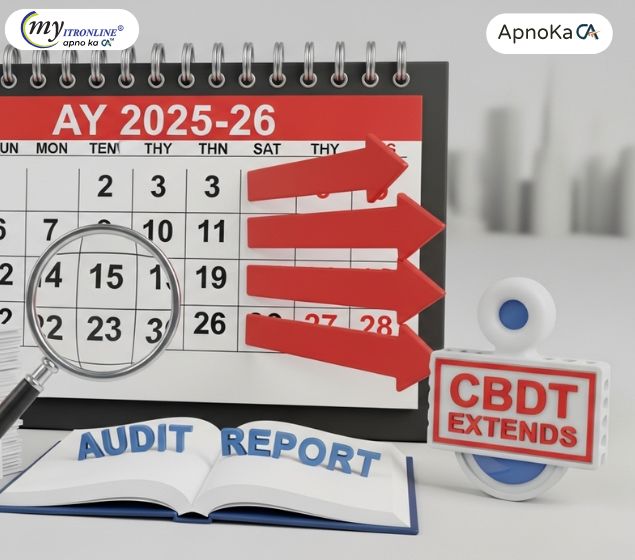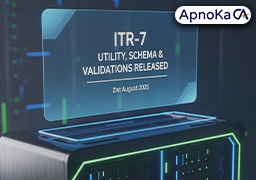# taxfiling
12 posts in `taxfiling` tag

Tax Relief: CBDT Extends ITR & Audit Report Due Dates for AY 2025-26
This blog post details the Central Board of Direct Taxes' (CBDT) extension of due dates for filing Income Tax Returns (ITRs) and tax audit reports for Assessment Year (AY) 2025-26. It explains the reasons behind the extension, provides a clear table of new deadlines for various taxpayer categories (individuals, audit cases, and transfer pricing cases), and discusses why tax professionals are still advocating for further extensions. The post also outlines the penalties and interest associated with missing these extended deadlines, including fees under Section 234F and interest under Section 234A. Finally, it offers practical advice for taxpayers to ensure timely compliance.

Before You Click That Tax Notice: Read This Security Alert.
This blog provides a simple guide to help taxpayers differentiate between genuine and fraudulent income tax notices. It outlines five key verification steps, such as checking the DIN and sender details, to prevent falling victim to financial scams.

Complete Guide to ITR-7 Form (AY 2025-26): Utility, Schema & Validation
The Income Tax Department has released the ITR-7 Form for AY 2025-26, applicable to persons and institutions required to file returns under sections 139(4A), 139(4B), 139(4C), and 139(4D). This blog covers the newly released Excel-based utility, JSON schema, and validation guidelines to simplify your tax filing process.
.jpg)
Good News for Taxpayers: Delayed Income Tax Refunds Are Finally Being Released
The long wait for delayed income tax refunds is finally coming to an end! The Income Tax Department has taken steps to clear pending refunds by resolving portal glitches, verifying returns faster, and processing lakhs of refunds worth crores of ₹ daily. Learn why refunds were delayed, what’s being done now, and follow a simple checklist to make sure your refund reaches your bank account without further delay.
.jpg)
Lost Your Form 16? Don't Panic! Here's How to File Your ITR Successfully Without It.
This comprehensive guide addresses the common concern of a missing Form 16. It empowers salaried individuals to confidently file their Income Tax Return by detailing essential alternative documents (pay slips, Form 26AS, AIS) and providing a clear, step-by-step process for successful and compliant ITR filing, ensuring no one misses the deadline due to a lost document.
.jpg)
Oops! Did You Make an ITR Mistake? Here's How to Easily File a Revised Return
Made an error on your Income Tax Return? Don't stress! This comprehensive guide walks you through the process of filing a Revised Return under Section 139(5) for Assessment Year 2025-26. Learn common reasons for revision, key deadlines, and a simple step-by-step online process to ensure your tax records are accurate and penalty-free.
.jpg)
Unlock Past Tax Corrections: Excel Utilities for Updated ITR-1 & ITR-2 (AY 2021-22 & 2022-23) Now Live!
The Income Tax Department has launched Excel utilities for filing Updated Returns (ITR-U) for Assessment Years 2021-22 and 2022-23, extending the filing window to 48 months as per the Finance Act, 2025. This blog details who can file ITR-U using ITR-1 and ITR-2, explains the new deadlines, outlines the penalty structure, and provides a step-by-step guide on using the Excel utilities to declare additional income and ensure tax compliance.
.jpg)
Big News for Business Owners and Professionals: ITR-3 Utility Gets a Makeover for AY 2025-26!
This blog post gives a clear and straightforward explanation of the major updates to the ITR-3 income tax utility for Assessment Year 2025-26. It emphasizes the new business and profession codes that improve the classification of different income sources, such as online trading and digital content creation. The post also discusses other important changes, including higher thresholds for reporting assets, updated capital gains reporting rules, detailed requirements for deductions, and clarifications on the new tax system. This information is directed at business owners, professionals, and HUFs, offering useful guidance on understanding and managing these changes to make tax filing easier.
.jpg)
GSTR-3B Table 3.2: Your Essential Guide to the New Auto-Fill Rules
This blog post breaks down the recent GST Portal advisory about Table 3.2 of GSTR-3B. It explains that starting July 2025, details of inter-state supplies to unregistered persons, composition taxpayers, and UIN holders will be auto-filled and non-editable in GSTR-3B. This information will come directly from GSTR-1 or IFF. The advisory aims to cut down on mistakes and keep data consistent. The post also covers why this change is occurring, how to fix errors by amending GSTR-1/IFF or using GSTR-1A, and offers an action plan for taxpayers to ensure they report accurately and smoothly file their GST.
.jpg)
Easy Guide: Which ITR Form (3 or 4) is Right for You, Freelancer?
This blog explains the key differences between ITR-3 and ITR-4, specifically for freelancers and consultants, outlining eligibility criteria and scenarios to help them choose the correct income tax return form.
.jpg)
ITR-2 Filing Just Got Easier: Pre-filled Data Now Online!
The Income Tax Department has made it much easier to file ITR-2 by allowing online submission with pre-filled data. This change cuts down on manual entry, reduces mistakes, and makes it more convenient for individuals and HUFs who have different income sources. This blog post outlines these advantages and recommends myITROnline as a reliable partner for smooth tax filing.
.jpg)
ITR Forms AY 2025-26: Your Easy Guide to Choosing the Right One
This guide makes it easier to choose the right Income Tax Return (ITR) form for Assessment Year (AY) 2025-26 (Financial Year 2024-25). It explains each ITR form (ITR-1 Sahaj, ITR-2, ITR-3, ITR-4 Sugam, ITR-5, ITR-6, ITR-7) by outlining who can use each one, who cannot, and the specific income sources or taxpayer categories they cover. The guide also notes important updates for AY 2025-26, including the inclusion of certain LTCG in ITR-1 and ITR-4, changes in VDA reporting, updated capital gains segregation, higher thresholds for asset and liability reporting, and required deduction disclosures. The purpose is to help individuals and entities choose the right form for accurate and compliant tax filing.
